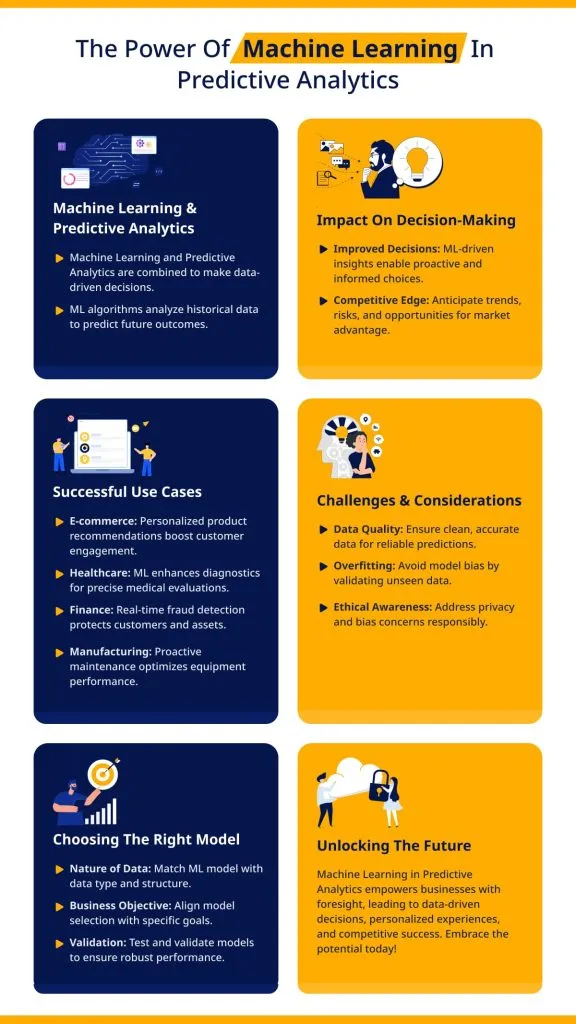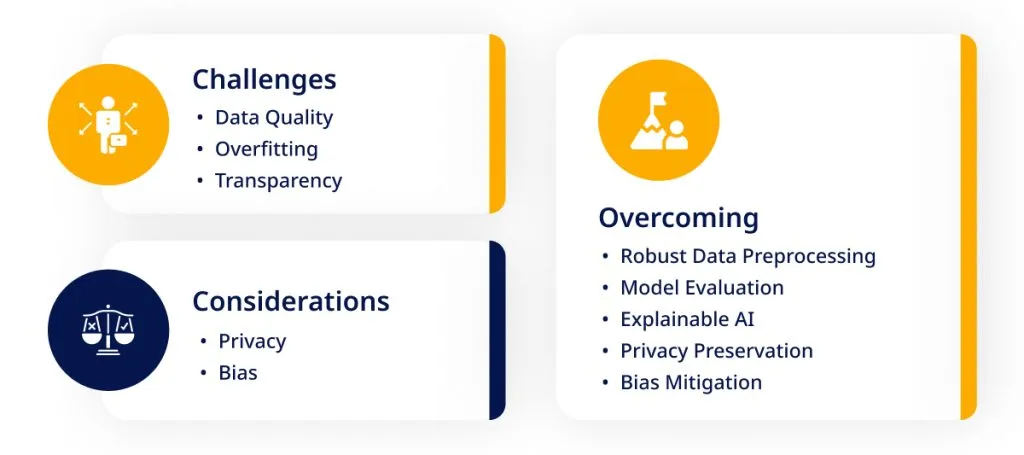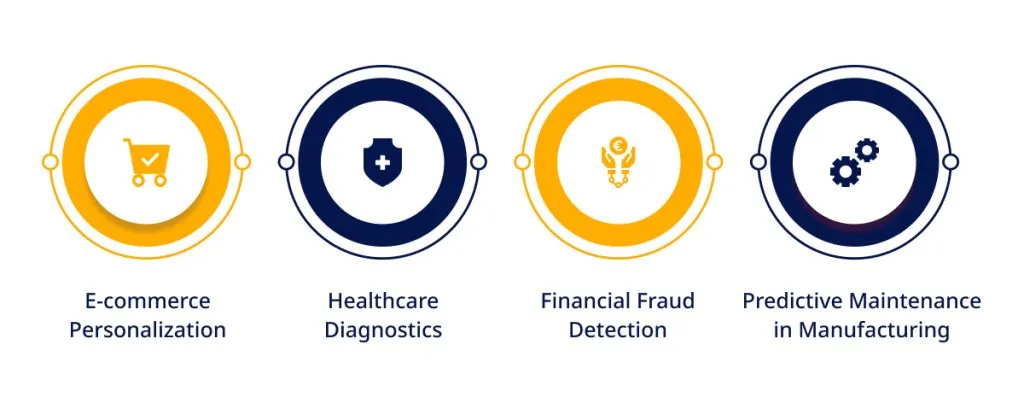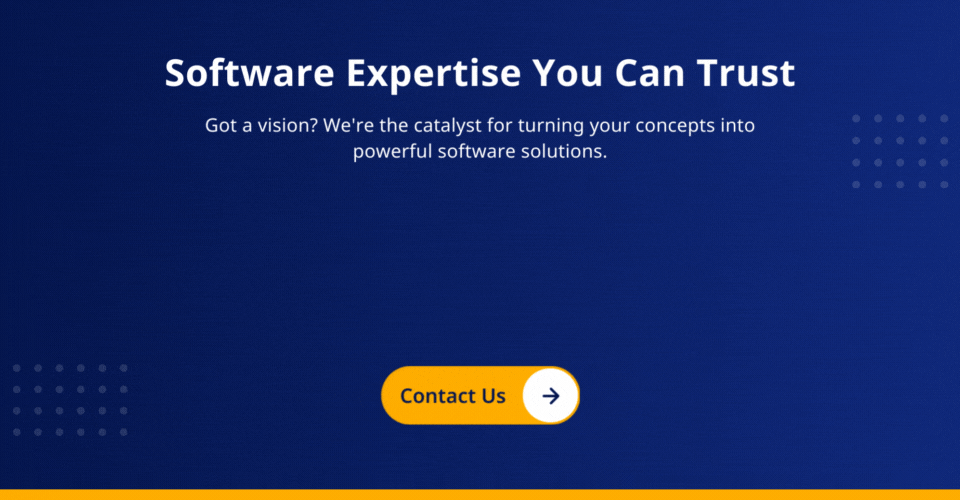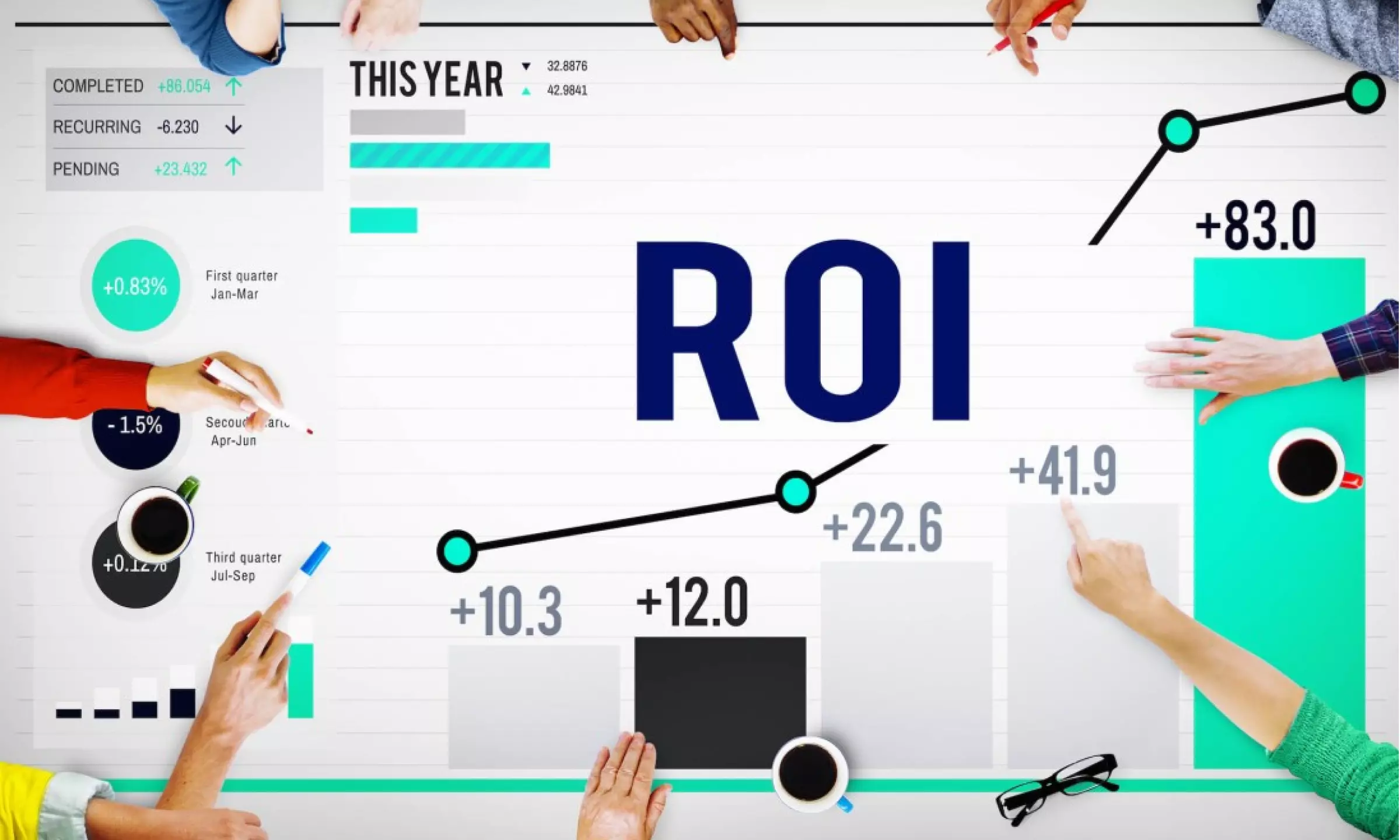Introducing the cutting-edge synergy that is revolutionizing the decision-making world – Machine Learning in Predictive Analytics!
The dynamic duo of Machine Learning and Predictive Analytics empowers businesses to unlock their data’s true potential. From gleaning invaluable insights to foreseeing future trends, this powerful alliance reshapes how organizations strategize and stay ahead in the competitive landscape.
This blog post will embark on a captivating journey through the interplay of Machine Learning and Predictive Analytics, delving into its profound impact on businesses and revealing its transformative role in shaping data-driven decisions.
Understanding the Fundamentals
Predictive Analytics and Machine Learning lie at the core of data-driven decision-making, unlocking the power of information like never before.
Predictive Analytics involves extracting valuable insights from historical data to anticipate future outcomes. This process relies on statistical algorithms and data mining techniques to identify patterns and trends. On the other hand, a Machine Learning development company enables computers to learn from data without explicit programming, evolving their performance with experience.
A key distinction between traditional analytics and predictive analytics lies in their objectives. While traditional analytics focuses on understanding past events and performance, predictive analytics goes beyond forecasting future trends and behaviors, enabling businesses to address challenges and capitalize on opportunities proactively.
Understanding decision-making within the business context is vital. Using Predictive Analytics and Machine Learning, decision-makers gain a deeper understanding of market dynamics, customer preferences, and potential risks, paving the way for more strategic and informed choices that drive business success.
Machine Learning in Predictive Analytics
Machine Learning is the powerhouse that supercharges Predictive Analytics, transforming raw data into actionable insights.
Machine Learning algorithms are pivotal in enhancing predictive analytics by recognizing intricate patterns and relationships within vast datasets. This ability enables businesses to make accurate predictions and highly precise data-driven decisions. You can also use Machine Learning for fraud detection.
In the realm of Predictive Analytics, three primary types of Machine Learning techniques take center stage:
- Supervised Learning: This approach involves training the model with labeled data, where the outcome is known. The model learns to map input features to the desired output, making it suitable for tasks like classification and regression.
- Unsupervised Learning: Unlike supervised learning, unsupervised learning uses unlabeled data, allowing the model to discover hidden patterns and structures within the data. Clustering and dimensionality reduction are typical applications of unsupervised learning in predictive analytics.
- Reinforcement Learning: This type of learning operates on a reward-based system, where the model learns to make decisions through trial and error. Reinforcement learning finds application in scenarios where an agent interacts with an environment to achieve specific goals.
Discover how ValueCoders can enhance the impact of machine learning.
An overview of the predictive analytics process with top Machine Learning companies entails several key steps. Starting with data collection and preprocessing, data are transformed into an analysis-ready format.
Machine Learning models are then trained on historical data, fine-tuning parameters to optimize performance. Once the model is trained, it is deployed to make predictions on new, unseen data, providing valuable insights that drive strategic decision-making.
The symbiotic relationship between Machine Learning and Predictive Analytics is reshaping industries, empowering businesses to make proactive decisions that lay the foundation for a successful future.
Also Read – Exploring Innovation: Machine Learning App Ideas
The Impact on Decision-Making
Machine learning-driven predictive analytics is a game-changer, reshaping the decision-making landscape with its profound impact and transformative capabilities.
Through predictive analytics, businesses comprehensively understand historical data, empowering decision-makers to anticipate future trends and behaviors. This foresight is crucial in developing proactive strategies that adapt to dynamic market conditions and customer preferences.
The integration of Machine Learning in Predictive Analytics elevates decision-making to new heights. By harnessing advanced algorithms, businesses achieve increased accuracy in predictions, reducing the margin of error and enabling confident choices.
The benefits of using Machine Learning in Predictive Analytics for decision-making extend beyond accuracy. Real-time insights into customer behavior, market shifts, and emerging trends empower organizations to stay ahead of the competition and capitalize on opportunities with a data-driven edge.
Case studies provide tangible evidence of Machine Learning’s impact on decision-making. From personalized marketing campaigns that boost customer engagement to supply chain optimizations that streamline operations, success stories demonstrate the transformative power of Machine Learning-driven Predictive Analytics across diverse industries.
Embracing the fusion of Machine Learning and Predictive Analytics is not merely an option but a necessity for businesses seeking assistance from top machine learning companies to thrive in the digital age. The unprecedented level of foresight and precision it brings to decision-making ensures that organizations can confidently navigate uncertainties and propel themselves toward success.
Also read: Artificial Intelligence Vs. Machine Learning Vs. Deep Learning
Challenges and Considerations
While the fusion of Machine Learning and Predictive Analytics brings immense opportunities, it also comes with its fair share of challenges that top machine learning companies must address to ensure the success of their data-driven endeavors.
- Data Quality: The accuracy and reliability of predictions heavily depend on data quality. Inaccurate or incomplete data can bring biased results and unreliable insights. Ensuring data cleanliness and implementing robust data validation processes are essential steps to overcome this challenge.
- Overfitting: An overfitted machine learning model performs exceedingly well on training data but fails to generalize on unseen data. Regularization techniques, cross-validation, and careful feature selection can mitigate overfitting and enhance the model’s performance.
- Transparency: Machine Learning models often function as black boxes, making understanding how they arrive at specific predictions challenging. Explainable AI techniques, such as LIME (Local Interpretable Model-Agnostic Explanations), can provide insights into model decisions, increasing transparency and trust.
Ethical Considerations:
- Privacy: Predictive Analytics relies heavily on large volumes of data, raising privacy concerns. When you hire machine learning app developers, make sure they adopt rigorous data privacy measures and adhere to data protection regulations to safeguard sensitive information.
- Bias: Biased data can lead to discriminatory predictions, perpetuating inequalities. Assessing and addressing biases in data, algorithms, and decision-making processes is crucial. Regular audits and diversity in data collection can help minimize bias and promote fairness.
Dive into the ways machine learning revolutionizes decision-making.
Overcoming the Challenges:
- Robust Data Preprocessing: Thoroughly clean, validate, and preprocess data to ensure its quality and reliability for accurate predictions.
- Model Evaluation: Implement rigorous model evaluation techniques to detect and address overfitting, ensuring the model generalizes well on unseen data.
- Explainable AI: Employ explainable AI techniques to shed light on the decision-making process of Machine Learning models, enhancing transparency and facilitating model interpretations.
- Privacy Preservation: Adhere to stringent data privacy measures, anonymize sensitive data, and obtain explicit user consent to protect their privacy. Use machine learning for fraud detection.
- Bias Mitigation: Continuously monitor for biases in data and algorithms and implement corrective measures to ensure fairness in predictions.
By addressing these challenges and ethical considerations, businesses can harness the true potential of Machine Learning-driven Predictive Analytics, making data-driven decisions with confidence and integrity.
Also Read – Winning With AI and Machine Learning Frameworks
Choosing the Right Model for Your Needs
Selecting the appropriate Machine Learning models is a pivotal step in leveraging the full potential of predictive analytics. A well-chosen model can yield accurate predictions and valuable insights, driving informed decision-making within your organization.
Each predictive analytics task is unique, and different machine learning models have varying strengths and limitations. Choosing the right model is vital to ensure it aligns with your specific business requirements and data characteristics.
Tips for Model Selection:
- Nature of Data: Understand the nature of your data, including its size, structure, and type. For example, linear regression might be suitable for continuous data, while decision trees excel in handling categorical data.
- Business Objective: Clearly define your business objective and the question you want the model to answer. Whether it’s classification, regression, or clustering, align the model with your specific goals.
- Model Performance: Evaluate different models based on performance metrics such as accuracy, precision, recall, or F1-score. Choose the model that best meets your application’s desired performance level.
Once you’ve selected a model, validating and testing its performance is crucial. Use techniques like cross-validation to assess how well the model generalizes to new, unseen data. This step helps to identify potential overfitting and ensures the model’s reliability in real-world scenarios.
In predictive analytics, a well-selected and thoroughly validated model becomes a powerful asset, unlocking valuable insights from your data and empowering decision-makers to make data-driven choices with confidence. Remember, the success of your predictive analytics endeavors heavily relies on the careful selection and validation of the right Machine Learning model.
Read this blog: Machine Learning Development Companies Supporting SME & Enterprises ML Adoption
Successful Use Cases
Machine Learning in Predictive Analytics has proven to be a transformative force in numerous industries, revolutionizing decision-making and driving remarkable outcomes. Let’s delve into some real-world use cases that showcase the power of this dynamic duo:
- E-commerce Personalization: Online retailers like Amazon leverage Machine Learning in Predictive Analytics to deliver personalized product recommendations. The system predicts products that align with individual preferences by analyzing past user behavior, purchase history, and browsing patterns.
This level of personalization has significantly boosted the engagement of customers, resulting in increased sales.
- Healthcare Diagnostics: The healthcare industry embraces Machine Learning solutions to enhance diagnostic accuracy. For instance, in radiology, ML models analyze medical imaging data to detect anomalies and assist radiologists in making more precise diagnoses.
By augmenting human expertise, Machine Learning-driven Predictive Analytics has the potential to revolutionize healthcare diagnostics and improve patient outcomes.
- Financial Fraud Detection: Financial institutions use algorithms of Machine Learning for fraud detection transactions in real-time. ML models can identify suspicious activities and flag potential fraud attempts by analyzing transaction data, customer behavior, and historical fraud patterns.
This has helped prevent financial losses and safeguarded customers’ assets.
- Predictive Maintenance in Manufacturing: Manufacturers employ Machine Learning and manufacturing data analytics to predict equipment failures and plan maintenance proactively. ML models can anticipate potential breakdowns by analyzing sensor data, production parameters, and historical maintenance records, allowing companies to schedule maintenance tasks at optimal times and reduce downtime significantly.
In these successful use cases, the impact of Machine Learning-driven Predictive Analytics on decision-making is evident. Businesses can now make data-driven decisions, optimizing processes and resources.
The predictive insights have allowed companies to foresee future trends, anticipate challenges, and devise strategies that align with market demands and customer needs.
The successful implementation of Machine Learning in Predictive Analytics highlights some key takeaways for businesses:
- Data-Driven Decision-Making: Machine Learning empowers organizations to base decisions on data insights rather than intuition, improving accuracy and strategic planning.
- Proactive Approach: Predictive Analytics enables businesses to adopt a proactive approach by anticipating future events, enabling them to take preemptive actions.
- Enhanced Customer Experience: Personalization and targeted recommendations based on predictive insights lead to improved customer experiences and higher customer satisfaction.
Consult with ValueCoders for insights into data-driven decisions.
Conclusion
From unraveling the complexities of data to empowering decision-makers with foresight, Machine Learning-driven Predictive Analytics has emerged as a game-changer in the business landscape.
Recapping the major points, we explored how Machine Learning enhances predictive analytics, its impact on decision-making, and the challenges accompanying this transformative technology. By leveraging Machine Learning’s capabilities, businesses can make data-driven decisions, optimize operations, and stay one step ahead in a competitive world.
So, don’t miss out on the opportunity to reshape your organization’s future. Embrace the potential of Machine Learning in Predictive Analytics and propel your business toward success. Let’s embark together on this data-driven journey and unlock the doors to new possibilities!


